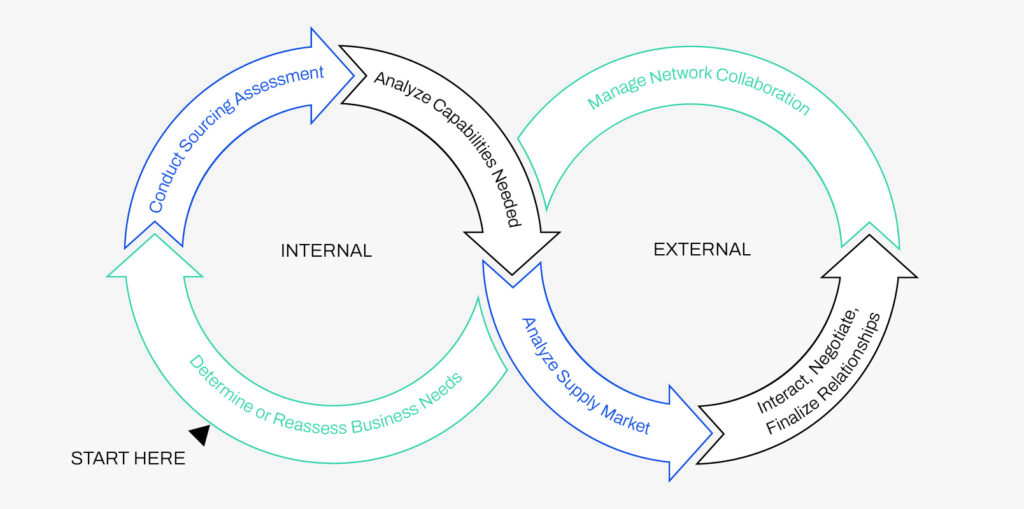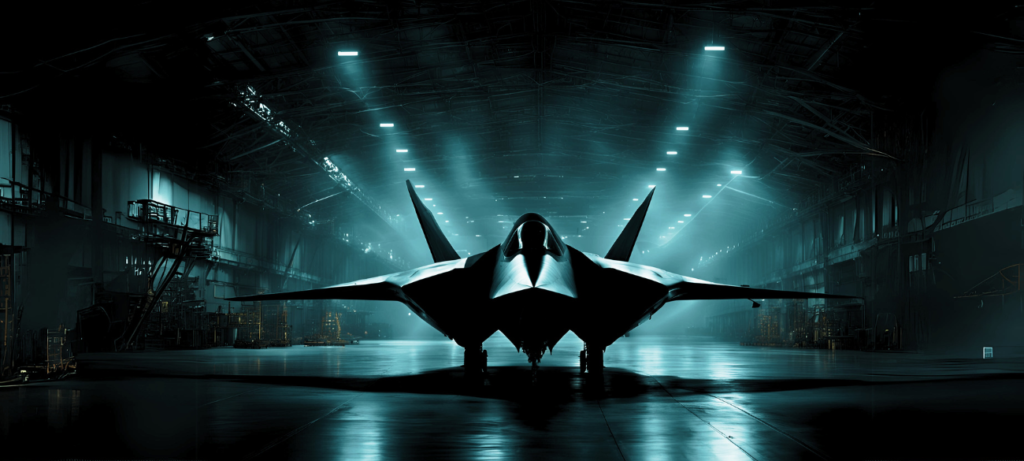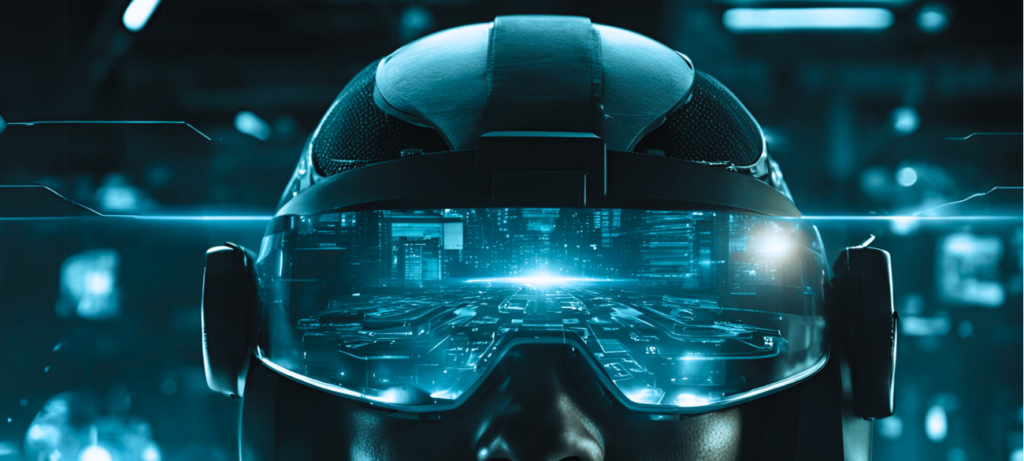The Backdrop
The mantra for “innovation,” which we see in the commercial, government, and military realms alike, pervades our age. This obsession with innovation is understandable. For the past few decades, innovation in terms of new concepts and business models, as well as progress in hardware and software, have been opening high-value opportunities, often generating a virtuous cumulative process characterized by exponential returns (Azhar 2021). As a result, innovation has not just created winners and losers: those who won have won disproportionally, and those who lost have suffered devastatingly (Phillips 1971; Tilton 1971). In the words of a prominent economist, the age of “average is over” (Cowen 2013). For this reason, nations at large, private sector corporations, and militaries are all rushing to pursue innovation and technological change, not only to win but also to eschew massive defeats with long-lasting strategic implications. However, there is a paradox around this rush toward innovation: innovation will succeed or fail because of factors largely outside the control of innovators.
A range of external factors will be more relevant to securing competitive advantage in the future. The accelerating wave of technological change will make technological leadership more challenging than ever to achieve – if it can even be accurately ascertained. To understand the factors underlying success, it is important to explore the concept of ecosystems that literature on innovation presents. This concept deconstructs ecosystems into elements that can enable and support, or constrain and hamper, innovation: the core competencies of innovators, upstream components, and downstream complementors. Core competencies refer to the critical skills required to succeed in innovation and technological change – for example, mechanical engineering for automotive or computer science for machine learning. However, innovations such as automotive or machine learning applications cannot succeed without other critical elements of their ecosystems, such as tires, highways, and fuel stations, or advanced processors, microelectronics, and standards for enterprise-level data sharing (Adner and Kapoor, 2010; Agrawal, Gans and Goldfarb, 2018).
Innovation Ecosystems
In his Measuring Military Power, Joshua Epstein (1984) noted that the conventional balance between NATO and the Soviet Union was not solely or even primarily affected by traditional force structures but, rather, more profoundly shaped by factors such as maintenance, logistics, and the readiness of pilots. In the event of conflict, Epstein explained, these factors would quickly and seriously reduce the Soviet Union’s capacity to conduct sustained air operations. Presciently understanding the dynamics of contemporary military operations, Epstein’s insights highlight the enduring relevance of military ecosystems (Watling and Reynolds, 2022). According to a widely accepted understanding, an ecosystem comprises three interacting elements: the core competencies of the innovator, the components provided by upstream suppliers, and complementors provided by downstream enablers (Adner, 2012). Core competencies refer to organizations’ internal skills and doctrine relating to a specific product, service, or function. We can understand these as electronic engineering and software skills for computers or flying skills and air power concepts for air forces. Upstream components refer to all critical systems, subsystems, and components sourced from outside, like tires for cars, turbofan engines for aircraft, and military-grade aircraft for air forces. Downstream complementors refer to critical enablers, such as the assets that permit a product to deliver its potential or generate value; for example, consider how military air bases provide the runways and support facilities to service military aircraft and other complex systems.
The notion of ecosystems deserves attention not only because it sheds light on the challenges that air forces face in pursuing innovation and new technologies but also because these challenges are of growing importance. Technological change is making technological leadership more ephemeral, and, as a result, ecosystems will likely become more critical in shaping the outcome of strategic competition. Simply put, when competitors possess similar technologies, access to components and the role of complementors play bigger roles in determining success. Moreover, as air forces generally pursue innovation and new technologies in similar realms, the more they will compete for the same components and complementors necessary for success. As a result, ecosystems will become a source of competition in themselves: access to lithium for electric batteries, microchips for electronic devices, or the development of charging stations for electrically-powered vehicles are some examples. Finally, ecosystems are ultimately technology-dependent in themselves. When naval warfare was based on wooden sailing ships, navies strived to secure oak supplies. The transition to iron steamships altered navies’ ecosystems, making access to iron and coal more important. Thus, the more air forces seek to innovate and adopt breakthrough technologies, the more they impact their ecosystems. In order to preserve competitive advantage, therefore, air forces will need to understand the long-term ramifications of the innovations they seek to exploit in transforming to next-generation capabilities.
Technological change is making technological leadership more ephemeral, and, as a result, ecosystems will likely become more critical in shaping the outcome of strategic competition.
Dr. Andrea Gilli
Innovation and Ecosystems
Ecosystems comprise various elements necessary for a technology to yield benefits or generate value. Self-evidently, as technology changes, so does its related ecosystem. Technological change can be of three types: enhancing, destroying, and disruptive (Tushman and Anderson, 1986; Bower and Christensen, 1995). Ecosystem-enhancing technological change calls for increases in existing core competencies, components, and complementors. For instance, developing medium- and high-altitude long-endurance drones increased demand for satellite communications and bandwidth (Gilli and Gilli 2016). On the other hand, ecosystem-destroying technological change drastically reduces the need for existing competencies, components, or complementors. The transition from steam to fuel-powered ships reduced the importance of the coaling bases that had long given the British Empire an advantage in naval power (Dahl 2001). Finally, ecosystem-disrupting innovation can destroy elements of ecosystems while simultaneously calling for or creating entirely new types of competencies, components, or complementors. The introduction of main battle tanks not only made horse cavalry obsolete but also generated the need for armor doctrine, engines, and logistics for fuel (Pierce, 2004).

Yet, innovation and technological change are unlikely to have constant effects across ecosystems: they may reduce the demand for existing core competencies while calling for new ones, disrupt components but less powerfully, and not produce any impact on complementors, for example. In another scenario, core competencies and components may be strengthened, but complementors may be significantly disrupted. In addition to the type of change they trigger, it is important to consider the intensity of likely or potential effects, which depend not only on technologies but also on how these are employed. Such impact analysis is difficult to forecast ex-ante, but it is critical to begin developing a nuanced understanding of potential impacts and effects across different and critical elements of ecosystems. Figure 1 elucidates key considerations that military leaders need to consider as they lead their workforces into a digital technology-driven era where winners will be determined by their ability to innovate.
Effects on Core Competencies
Innovation and technological change may affect the core competencies of the air force as a specific service branch, or more likely, along with other military services more widely. Consider the example of high-altitude long-endurance drones again: these platforms require significantly fewer highly skilled pilots than fighter aircraft. If air forces shift reliance on greater numbers of unmanned platforms for combat missions, existing cohorts of fighter pilots will be in excess of requirements. This is similar to how the introduction of long-range air-to-air and air-to-ground missiles over the past few decades changed the ways that air forces plan and execute kinetic operations, which triggered the development of new combat doctrines, operational concepts, and pilot skills. As air forces pursue innovation and technological change for next-generation capabilities, they must understand the implications of specific shifts in their core competencies.
Through experimenting with emergent technologies and their role in future capability, air forces must be able to shape technological trajectories by choosing to promote specific effects – which can be enhancing, destroying, or disruptive. Evidence from the commercial world and previous experiences in military innovation suggest that continuous conceptual and technological experimentation can combine with rapid feedback loops from end-users to act as a shield against risks of disruption (Horowitz, 2010; Collins, 2005; Krepinevich, 2023). Technological change also generates resistance. In his famed book about air-to-air warfare, Steven Fino (2018) highlighted the dilemma that the introduction of automation raised in the US Air Force: was the core mission role of fighter pilots fighting or piloting? As automation made piloting less demanding, fighter pilots faced an identity crisis, leading some seasoned pilots to resist change because of existing cultural models and biases. Even the legendary Colonel John Boyd opposed the idea of air-to-air missiles. Next-generation air forces, which envision fighter pilots twinned with digital avatars and autonomous loyal wingmen as systems of systems, will certainly encounter cultural resistance to the new operational constructs these transformations will bring. As the future role of fighter pilots is transformed into one currently associated with theater commanders, air force leaders must anticipate, prepare, and communicate the direction of future changes to ensure their forces are prepared for transformative change.
As technologies have advanced over the past seven decades, recruitment policies have progressively altered, transitioning from focusing on the best hands to the best heads (Fino 2018). The change journey necessary for the generational shift in air power will continue to raise inherent questions about workforce and organizational development. Fighter pilots are already smaller components of air forces than they once were. Which types of airmen and specialists will air forces require in the future? What will the role and importance of human systems integrators, UI/UX designers, or space domain specialists be in the future? Moreover, if future warfighting interfaces emphasize flying skills less and less, what would happen to the service ethos of air forces? If fighter pilots were to shrink further as a component of the air force, how should service leaders manage the change relating to what their enterprise represents and who it is represented by? These multi-pronged challenges along the journey of change will involve reorienting and retraining workforce mindsets.
Effects on Components
Innovation and technological change affect the components that air forces need to effectively compete and succeed. These are the technologies sourced outside the traditional boundaries of the innovator. For air forces, these components are aircraft and related systems, subsystems, spare parts, and materials. Measuring the effects of innovation and technological change is complex because shifts can take long periods to complete. The introduction of aircraft and submarines as military platforms was a revolutionary and disruptive innovation 120 years ago. Those first-generation aircraft and submarines were low-performance platforms with limited utility to what they represent today. Yet, next-generation systems are somehow a continuation of those same disruptive effects stretched out over an extended time period. These effects are incredibly difficult to forecast and traditionally do not deeply inform sourcing practices and approaches.

The effects of innovation and technological change tend to be asymmetric, particularly on critical supply chains. High-altitude long-endurance drones, for example, require less sophisticated engines than fighter aircraft but more advanced sensors – this is why the RQ-4 Global Hawk can cost more than twice as much as the F-35 Joint Strike Fighter. When it comes to next-generation capabilities, there will be areas where change is enhancing (like aerodynamics and propulsion), areas where innovation may be more destructive (like additive manufacturing, which may bring a significant portion of manufacturing back in-house), and others where it is disruptive (for instance, relating to automation, software, and algorithms). Secondly, complex, non-linear, and asymmetric changes of this sort have difficult to predict and, at times, daunting implications on critical supply chains and the traditional defense industrial base.
In the private sector, it is common for companies to have multiple lines of business but derive the bulk of their profits largely from one or two of these. Should component-destroying technological change occur precisely on these profitable lines of business, air forces could struggle to source other components they rely on the same producers for. These challenges will likely be compounded as multiple actors innovate in the same area. The resulting aggregate demand for common inputs will make availability more scarce. Paradoxically, innovation may become harder to achieve not because air forces do not pursue it sufficiently but because they pursue it too much. Mapping out and enhancing the resilience of critical supply chains is thus of fundamental importance. The role of deeper cooperation, coordination, and information-sharing among partners and stakeholders, local and international, will be essential to steering and pacing fundamental shifts resulting from future innovation and technologies.
Effects on Complementors
Downstream complementors refer to the physical assets and infrastructure that enable a particular innovation or technology to be leveraged. These elements pose important future challenges because large-scale military infrastructure often entails high costs and can take several years, even decades for some programs, to develop fully. The development and management of key military infrastructure may often not fall under the full control, or even primary control, of air force leaders. For instance, overseas bases, satellite communications, or data warehouses may fall under the responsibility of other services, the joint staff, or even other government departments. Service control or ownership relating to downstream complementors is just one dimension of the challenge. The emergence of new complementors to address the needs of users as a result of breakthrough innovation or technologies leads to higher consumption of those technologies, accelerating the speed at which existing infrastructure becomes obsolete. This is why software development has traditionally underperformed hardware development because the constant growth in computing power disincentivized the development of more efficient software systems. Although not all technologies will observe advancements as seen in microelectronics, there will be risks that critical enablers are under-supplied. Predicting and managing risk relating to the long-term effects of innovation on complementors poses a significant future challenge. The French Navy did not realize that pursuing the steam engine in the mid-19th century would actually strengthen Britain, the country with the largest deposits of coal, against which its naval modernization was launched (Brodie, 1969). In the same way, air forces that achieve next-generation capabilities before competitors may achieve tactical and operational superiority at a given time. However, it is inherently difficult to predict longer-term effects.
Implications
We live in an age where innovation and exponential technological breakthroughs promise game-changing implications for air forces. Progress in computing power and digital technologies continuously permits new solutions to old and new problems (Brynjolfsson and McAfee, 2014). Innovation and technological change will increasingly occur on the periphery of ecosystems yet still have enormous disruptive power. Silicon Valley venture capitalist Marc Andreessen (2011) suggested this when he noted that software was, and still is, eating the world. These trends have multiple implications for air forces pursuing next-generation capabilities. Traditional models where doctrine informs procurement practices are becoming obsolete. Space companies such as Maxar, specializing in observation, and Starlink, offering communications solutions, have capabilities that military users can exploit at scale but will demand new operating models. However, innovation is difficult per se – it is also difficult to measure and raises the specter of enormous uncertainty relating to its future impact. The response to these challenges does not necessarily entail trying harder for air forces. Strategic alignment among multiple internal and external stakeholders will be critical, though it will not be easy. Stronger international partnerships will be needed to develop more comprehensive strategic approaches to cultivating ecosystems and ensuring long-term supply chain resilience where access to critical enablers can be assured. In the age of exponential returns, those who win will win massively, and those who lose will lose devastatingly.
Innovation and technological change will increasingly occur on the periphery of ecosystems yet still have enormous disruptive power.
Dr. Andrea Gilli
References
Adner, R. (2012) The Wide Lens: A New Strategy for Innovation. New York, NY: Portfolio Books.
Adner, R., and Kapoor, R. (2010) ‘Value creation in innovation ecosystems: how the structure of technological interdependence affects firm performance in new technology generations.’ ‘Strategic Management Journal,’ 31(3), 306-333.
Andreessen, M. (2011) ‘Why Software Is Eating the World,’ Wall Street Journal.
Asoni, A., Gilli, A., Gilli, M., and Sanandaji, T. (2022) ‘A mercenary army of the poor? Technological change and the demographic composition of the post-9/11 U.S. military,’ Journal of Strategic Studies. Vol. 45, No. 4, pp. 568-614.
Azeem, A. (2021) Exponential, Chaos in an Age of Accelerating Technology. New York, NY: Random House.
Bessen, J. (2022) ‘The New Goliaths: How Corporations Use Software to Dominate Industries, Kill Innovation and Undermine Regulation,’ New Haven, CT: Yale University Press.
Bresnahan, T. and Trajtenberg, M. (1995) ‘General purpose technologies ‘Engines of growth’?’ Journal of Econometrics. Vol. 65, No. 1, pp. 83-108.
Brodie, B. (1969) Sea Power in the Machine Age. Westwood, CT: Greenwood Press.
Brooks, S. G. and William C. W. (2016) ‘The Rise and Fall of the Great Powers in the Twenty-first Century: China’s Rise and the Fate of America’s Global Position,’ International Security, Vol. 40, No. 3.
Brynjolfsson, E. and McAfee, A. (2014) The Second Machine Age: Work, Progress, and Prosperity in a Time of Brilliant Technologies. New York: W.W. Norton.
Caverley, J. (2007) United States Hegemony and the New Economics of Defense Security Studies, Vol. 16, No. 4, pp. 598–614.
Coldewey, D. (2023) ‘Google’s Bard lags behind GPT-4 and Claude in head-to-head comparison,’ Tech Crunch.
Cowen, T. (2013) Average Is Over: Powering America Beyond the Age of the Great Stagnation. New York, NY: Dutton.
Epstein, J. M. (1984) Measuring Military Power: The Soviet Air Threat to Europe. Princeton, NJ: Princeton University Press.
Fino, S. A. (2017) Tiger Check: Automating the US Air Force Fighter Pilot in Air-to-Air Combat, 1950-1980. Baltimore, MD: Johns Hopkins University Press.
Gholz, E. (2007) ‘Globalization, Systems Integration, and the Future of Great Power War,’ Security Studies, Vol. 16, No. 4 (October-December), pp. 615–636.
Gilli, A. and Gilli M. (2016) ‘The Diffusion of Drone Warfare? Industrial, Organizational, and Infrastructural Constraints,’ Security Studies, Vol. 25, No. 1, pp. 50-84.
Henderson, R. M. and Kim B. C. (1990) ‘Architectural Innovation: The Reconfiguration of Existing Product Technologies and the Failure of Established Firms,’ Administrative Science Quarterly, Vol. 35, No. 1, pp. 9-30.
Levine, P. (2019) ‘The End of Cloud Computing,’ Andreeson Horowitz.
Available at: https://a16z.com/the-end-of-cloud-computing/
Pierce, T. (2004) Warfighting and Disruptive Technologies Disguising Innovation. London, UK: Frank Cass.
Phillips, A. (1971) Technology and Market Structure: A Study of the Aircraft Industry. Lexington, MA: Lexington Books.
Tilton, J. E. (1971) International Diffusion of Technology: The Case of Semiconductors. Washington DC: The Brookings Institution.
Watling, J. and Nick R. (2022) ‘Operation Z: The Death Throes of an Imperial Delusion,’ Royal United Services Institute.
Available at: https://static.rusi.org/special-report-202204-operation-z-web.pdf







